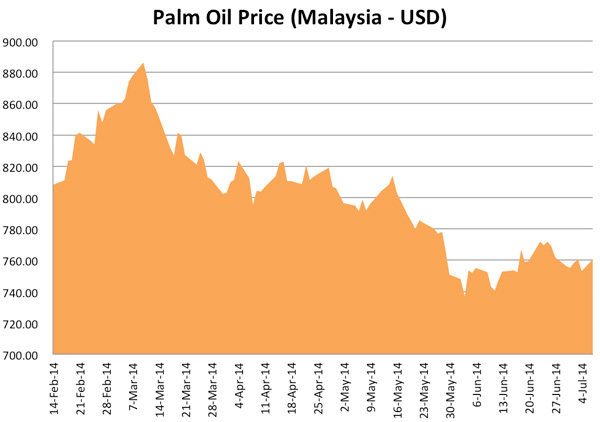Despite concerns that the el Niño weather phenomenon could reduce output, palm oil prices have fallen by more than a fifth in local currency terms since their most recent peak in March. Analysts are blaming competition from other edible oils amid record oilseed production.
Palm oil demand in both India and China, the world’s two largest palm oil importers, is expected to drop this year. India’s imports are currently forecast to decline more than 8 percent, while China’s are expected to be 10 percent lower, according to Bloomberg. The falling cost of soybean and sunflower oils is said to be eating into palm oil’s historic price advantage.

The oil palm is the world’s most productive oilseed, but expansion at the expense of wildlife-rich and carbon-dense rainforests across Indonesia and Malaysia has made it a target for environmental campaigners. The crop’s high profitability means that industrial plantations are now springing up in Central and West Africa, Central and South America, and in other parts of Southeast Asia, in addition to continued expansion in Indonesia and Malaysia.
In the short term, prices will likely be buoyed by el Niño conditions, which typically spur droughts and could cut output 10-15 percent during the next growing year. Longer term, large-scale expansion could put downward pressure on prices, reducing profitability.















